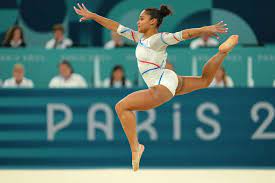The flips, the fun, the fear: is gymnastics right for your child?
It’s a familiar sight — kids tumbling across padded floors, balancing on beams, swinging from bars with unfiltered joy. But behind that joy often lies a quiet question in parents’ minds: Is gymnastics safe for my child?
This article dives into that question head-on. We’ll explore the physical and mental benefits, potential risks, and why gymnastics for kids continues to grow in popularity across Australian suburbs — from Preston to Point Cook.
Why So Many Parents Choose Gymnastics for Kids
From toddlers to teens, gymnastics has long been a go-to activity. Not just for future Olympians, but for everyday kids bursting with energy.
Here’s why it stands out:
- Full-body development: Unlike many sports that favour one part of the body (think soccer legs or cricket arms), gymnastics builds strength, flexibility, and balance across all major muscle groups.
- Body awareness: Learning how to control movement through space helps kids improve coordination and avoid injuries — not just in sport, but in everyday life.
- Confidence and resilience: Every cartwheel mastered, every fall recovered from, builds mental grit. Gymnastics teaches kids to try again — a skill that extends far beyond the gym floor.
- Social interaction: From group warm-ups to cheering on teammates, gymnastics for kids builds strong peer relationships in a structured, supportive environment.
According to Australian Sports Commission, gymnastics continues to rise in youth participation, especially among girls aged 5–12.
Is Gymnastics Safe for Kids of All Ages?
Yes — when managed by trained professionals and with age-appropriate instruction.
Just like riding a bike or climbing a tree, there’s a risk of injury in gymnastics. But these risks can be significantly reduced by:
- Qualified supervision: Instructors trained in childhood development and safety protocols.
- Progressive skill levels: Beginners aren’t thrown into flips and back handsprings. Instead, they’re guided through basics like rolls and posture control.
- Safety equipment: Thick landing mats, foam pits, and spotters are part of every session.
- Proper warm-up and cool-down routines: These help prevent sprains and strains before and after training.
Most importantly, quality programs focus on skill readiness, not performance pressure. Kids move at their own pace.
How to Choose the Right Gymnastics Program
Not all gymnastics programs are created equal. Here’s a quick checklist to guide your search:
- Instructor qualifications: Are coaches accredited with Gymnastics Australia or similar regulatory bodies?
- Class sizes: Small groups ensure your child gets the attention they need.
- Facility cleanliness and safety: Well-maintained equipment and clear hygiene practices are a must.
- Flexible pathways: Whether your child wants to train recreationally or aim for competition, a good program should support both.
Still exploring other sporting interests? If your child enjoys movement-based activities, gymnastics for kids is often a solid base before transitioning into sports like AFL, netball, or even cricket.
Gymnastics as a Gateway Sport
Gymnastics builds a foundation that supports nearly every sport. It’s no coincidence many elite athletes across codes — including tape ball cricket players — began with gym-based training.
It teaches:
- Spatial awareness
- Fast-twitch muscle control
- Discipline through repetition
Even if your child eventually gravitates to sports like gymnastics for kids or cricket, the physical literacy built in gymnastics sets them up for success.
One Melbourne-based indoor sports facility even encourages multi-sport participation, blending recreational gymnastics and indoor cricket to improve agility, strength and tactical thinking.
What Age Should Kids Start Gymnastics?
Children can begin as early as 18 months in parent-assisted classes. From ages 4–6, they typically transition to independent beginner sessions.
The key? Don’t wait for perfection. The earlier kids explore movement, the more they benefit physically and emotionally.
By the time they’re 7 or 8, many are ready for structured pathways that combine skill learning with light competition — and still leave room for fun.
No matter their age or ability, kids flourish when movement is joyful and pressure-free.
Signs Your Child Is Thriving in Gymnastics
You’ll know your child is in the right program when:
- They’re excited before class and chatty after it.
- They ask to show you what they’ve learned at home.
- They’re making new friends and feel included in the group.
- They’re growing stronger, more coordinated, and more confident.
And even if they eventually move on to something else, those early lessons — from persistence to posture — will stay with them for life.
Wrap-up: Movement That Builds More Than Muscles
So, is gymnastics safe for kids? Absolutely — when it’s built on a strong framework of safety, fun, and development.
From improved motor skills to increased confidence, gymnastics for kids unlocks lifelong physical literacy. Whether it’s the foundation for a cricket career, or just a fun after-school activity, it delivers real value.
As your child explores what they love — whether that’s movement, music, or even gymnastics for kids with a twist — don’t underestimate the power of early movement.
Encourage them to try. Watch them grow. And enjoy the ride.

